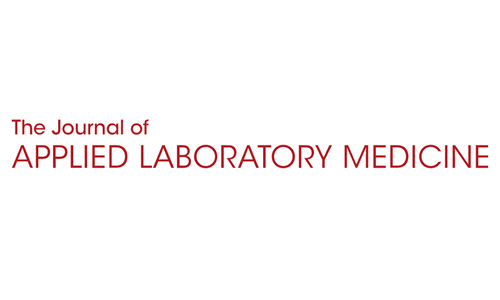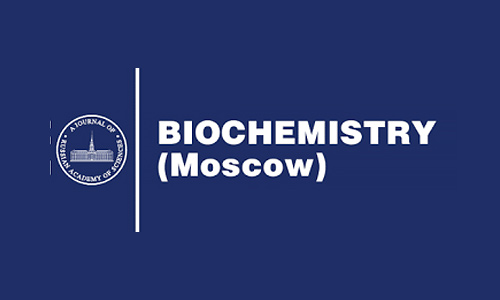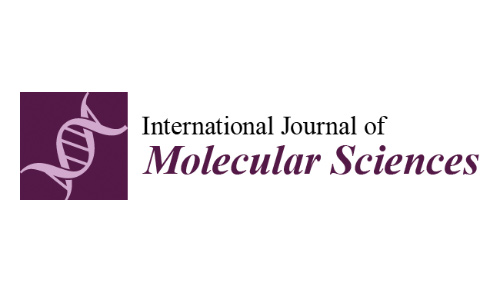- Follow Us
Publications
High-profile publications featuring CDI Labs products and services
274 Total Publications
Refine Your Search
Publication Details
- Date
- Link
- + Abstract

Journal of Applied Laboratory Medicine - Oxford Academic
- Main Product: HuProt
- HuProt: Detecting Autoantibodies by Multiparametric Assays: Impact on Prevention, Diagnosis, Monitoring, and Personalized Therapy in Autoimmune Diseases
- Luigi Cinquanta, Maria Infantino, Nicola Bizzaro
- IRCCS S.D.N, Naples
HuProt Review: The introduction of multiparametric autoantibody tests has been proposed to improve the accuracy of the immunological diagnosis of autoimmune diseases (AID) and to accelerate time for completing the diagnostic process. Multiplex tests are capable of detecting many autoantibodies in a single run whereas a traditional immunoassay uses a single antigen to detect only a single specificity of autoantibodies. The reasons why multiplex tests could replace conventional immunoassays lie in the evidence that they allow for more efficient handling of large numbers of samples by the laboratory, while ensuring greater diagnostic sensitivity in AID screening.

Cancer Science - Japanese Cancer Association
- Main Product: HuProt
- HuProt: High-throughput and multi-phases identification of autoantibodies in diagnosing early-stage breast cancer and subtypes
- Rongrong Luo, Cuiling Zheng, Wenya Song, Qiaoyun Tan, Yuankai Shi, Xiaohong Han
- Dept of Clinical Laboratory, National Cancer Center, Chinese Academy of Medical Sciences
HuProt Autoantibodies: Autoantibodies (AAbs) targeted tumor-associated antigens (TAAs) have the potential for early detection of breast cancer. Here, 574 early-stage breast cancer (ES-BC) patients containing 4 subtypes (Luminal A, Luminal B, HER2+, TN), 126 benign breast disease (BBD) patients, and 199 normal healthy controls (NHC) were separated into three-phases to discover, verify, and validate AAbs. In discovery phase using high-throughput protein microarray, 37 AAbs with sensitivity of 31.25%-86.25% and specificity over 73% in ES-BC, and 40 AAbs with different positive rates between subtypes were identified as candidates. In verification phase, 18 AAbs were significantly increased compared with the Control (BBD and NHC) in focused array.

Cancer Science - Japanese Cancer Association
- Main Product: HuProt
- HuProt: A novel immunodiagnosis panel for hepatocellular carcinoma based on bioinformatics and the autoantibody-antigen system
- Jinyu Wu, Hua Ye, et. al.
- College of Public Health, Zhengzhou University
HuProt Autoantibodies: Hepatocellular carcinoma (HCC) is a malignancy with a dismal survival rate. The novel autoantibodies panel may provide new insights for the diagnosis of HCC. Biomarkers screened by two methods (bioinformatics and the antigen-antibody system) were taken as candidate tumor-associated antigens (TAAs). Enzyme-linked immunosorbent assay was used to detect the corresponding autoantibodies in 888 samples of verification and validation cohorts. The verification cohort was used to verify the autoantibodies. Samples in the validation cohort were randomly divided into a train set and a test set with the ratio of 6:4. A diagnostic model was established by support vector machines within the train set. The test set further verified the model.

Cell Death & Disease
- Main Product: HuProt
- HuProt: Mitochondrial Drp1 recognizes and induces excessive mPTP opening after hypoxia through BAX-PiC and LRRK2-HK2
- Chenyang Duan, Lei Kuang, Chen Hong, Xinming Xiang, Jiancang Liu, Qinghui Li, Xiaoyong Peng, Yuanqun Zhou, Hongchen...
- State Key Laboratory of Trauma, Burns and Combined Injury, Shock and Transfusion Dept, Daping Hospital
Mitochondrial mass imbalance is one of the key causes of cardiovascular dysfunction after hypoxia. The activation of dynamin-related protein 1 (Drp1), as well as its mitochondrial translocation, play important roles in the changes of both mitochondrial morphology and mitochondrial functions after hypoxia. However, in addition to mediating mitochondrial fission, whether Drp1 has other regulatory roles in mitochondrial homeostasis after mitochondrial translocation is unknown. In this study, we performed a series of interaction and colocalization assays and found that, after mitochondrial translocation, Drp1 may promote the excessive opening of the mitochondrial permeability transition pore (mPTP) after hypoxia.

Proteomics
- Main Product: HuProt
- HuProt: A pre-processing pipeline to quantify, visualize, and reduce technical variation in protein microarray studies
- Sophie Bérubé, Thomas A. Louis, et. al.
- Department of Biostatistics, Johns Hopkins University Bloomberg, School of Public Health
HuProt Review: Technical variation, or variation from non-biological sources, is present in most laboratory assays. Correcting for this variation enables analysts to extract a biological signal that informs questions of interest. However, each assay has different sources and levels of technical variation, and the choice of correction methods can impact downstream analyses. Compared to similar assays such as DNA microarrays, relatively few methods have been developed and evaluated for protein microarrays, a versatile tool for measuring levels of various proteins in serum samples.

Biochemistry - Springer
- Main Product: HuProt
- HuProt: Analysis of the Repertoires of Circulating Autoantibodies’ Specificities as a Tool for Identification of the Tumor-Associated Antigens: Current Problems and Solutions
- Pavel V. Belousov
- Center for Precision Genome Editing and Genetic Technologies for Biomedicine, Engelhardt Institute of Molecular Biology, Russian Academy of Sciences
HuProt Review: Circulating autoantibodies against tumor-associated autoantigens (TAA) may serve as valuable biomarkers for a wide range of diagnostic purposes. Modern immunology offers a large variety of methods for in-depth comparative analysis of the repertoires of circulating antibodies’ antigenic specificities in health and disease. Nevertheless, this research field so far has met somewhat limited clinical success, while numerous data on the repertoires of circulating autoantibodies’ specificities in cancer patients are poorly integrated into the contemporary picture of the immunological and molecular landscapes of human tumors.

International Journal of Molecular Sciences
- Main Product: HuProt
- HuProt: Identification of Tumor Antigens in Ovarian Cancers Using Local and Circulating Tumor-Specific Antibodies
- Jessica Da Gama Duarte, Luke T. Quigley, Anna Rachel Young, Masaru Hayashi, Mariko Miyazawa, Alex Lopata, Nunzio...
- Olivia Newton-John Cancer Research Institute, School of Cancer Medicine, La Trobe University, Heidelberg
Ovarian cancers include several disease subtypes and patients often present with advanced metastatic disease and a poor prognosis. New biomarkers for early diagnosis and targeted therapy are, therefore, urgently required. This study uses antibodies produced locally in tumor-draining lymph nodes (ASC probes) of individual ovarian cancer patients to screen two separate protein microarray platforms and identify cognate tumor antigens.

Journal of Molecular Sciences
- Main Product: HuProt
- HuProt: Exploration of the Hsa-miR-1587–Protein Interaction and the Inhibition to CASK
- Lulu Zhang, Jiang Zhou, Ming Xu and Gu Yuan
- Research Center of Basic Medicine, Jinan Central Hospital
HuProt PPI: Hsa-miR-1587 has been found to be capable of forming G-quadruplex structures and is overexpressed in multiple cancer cell lines. Here, we explored the interactions between miR-1587 and proteins. HuProt™ human proteome microarray was utilized to screen the binding proteins, and it was discovered that CASK could bind to miR-1587 on the base of the G-quadruplex structure. Moreover, reelin and p21, which are downstream of CASK, were downregulated both transcriptionally and translationally by miR-1587, uncovered by q-RT-PCR and Western blot assays.

The Journal of Clinical Investigation
- Main Product: HuProt
- HuProt: The autoimmune signature of hyperinflammatory multisystem inflammatory syndrome in children
- Rebecca A. Porritt, Aleksandra Binek, Lisa Paschold, Magali Noval Rivas, Angela McArdle, Lael M. Yonker, Galit Alter,...
- Dept of Pediatrics, Division of Infectious Diseases and Immunology, and Infectious and Immunologic Diseases Research Center (IIDRC)
Multisystem inflammatory syndrome in children (MIS-C) manifests as a severe and uncontrolled inflammatory response with multiorgan involvement, occurring weeks after SARS-CoV-2 infection. Here, we utilized proteomics, RNA sequencing, autoantibody arrays, and B cell receptor (BCR) repertoire analysis to characterize MIS-C immunopathogenesis and identify factors contributing to severe manifestations and intensive care unit admission.

Nature Oncogene
- Main Product: HuProt
- HuProt: CRYβB2 enhances tumorigenesis through upregulation of nucleolin in triple negative breast cancer
- Yu Yan, Vanessa F. Merino, et. al.
- Dept of Radiology and Radiological Science, Johns Hopkins Medicine
HuProt Enzyme: Expression of β-crystallin B2 (CRYβB2) is elevated in African American (AA) breast tumors. The underlying mechanisms of CRYβB2-induced malignancy and the association of CRYβB2 protein expression with survival have not yet been described. Here, we report that the expression of CRYβB2 in breast cancer cells increases stemness, growth, and metastasis. Transcriptomics data revealed that CRYβB2 upregulates genes that are functionally associated with unfolded protein response, oxidative phosphorylation, and DNA repair, while down-regulating genes related to apoptosis.